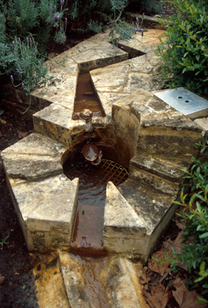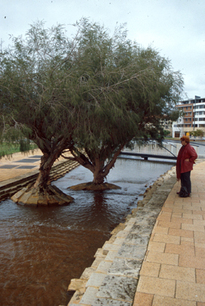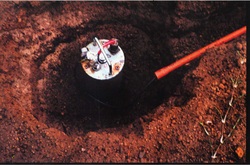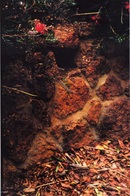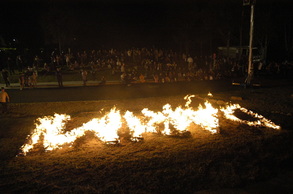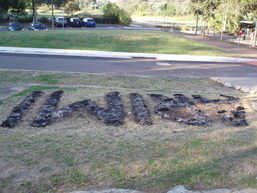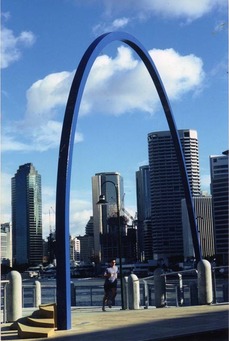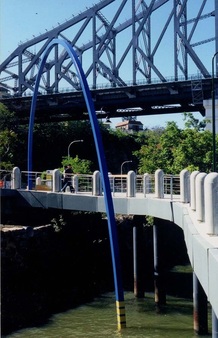|
Flashpoint: (details of an event at the Casula Powerhouse Regional Gallery, Sydney) a collaborative project between the artist Nola Farman and the knowledge holders of the D'harawal people, Frances Bodkin, Gavin Andrews and the Late George Fisher of the Waradjuri people. It is a work that expresses a sense of place that works beyond a limited sense of time and culture. The chosen word Darimi was burned into the ground in a healing ceremony devised by the traditional owners in the knowledge that even after nature and human intervention has obscured the word, the scar remains deep in the earth. As Frances said, "Darimi is a word that can be loosely translated into English as 'timeless' or 'endless' or 'it began a long time ago and it will never end'"It was devised as a work of reconciliation.
|
|
The Tidal Indicator - a single arc of steel reaches up 9.5 meters from a boardwalk and down 15 meters into the tidal flat between the walkway and a heritage wall. Span 18meters.The arc resonates with the idea of the river, the tides, the passage of time. The ultramarine blue is the colour of ocean depths. The end of the arc at the river surfacce is painted with black and yellow bands to show the full range of tidal flow of a river far inland. The heritage wall shows the natural patina of the river levels. On the boardwalk end, the arc emerges from the ground between two stone blocks that have been cut into layers (based on echo sounding charts of the bed of the river. A text carved into the surface is like a mathematical formula connecting the artwork and the river.
Writer: Anna Gibbs Location: Almost under the Storey Bridge, Brisbane, Queensland. |
